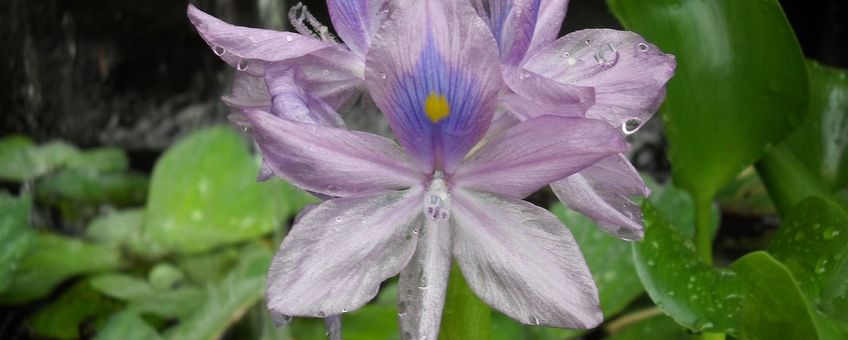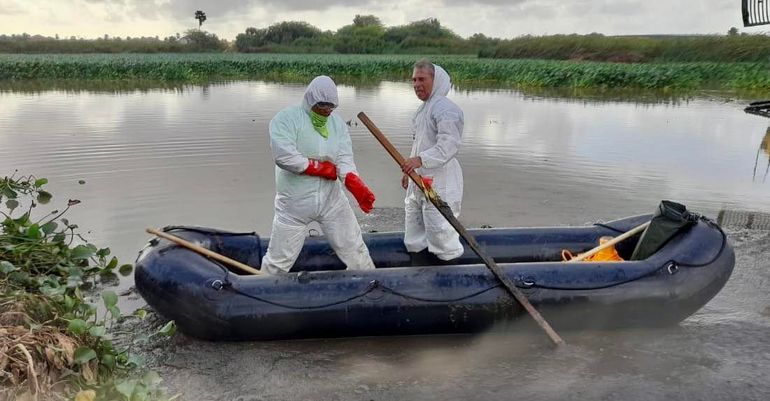
Beneath the beauty: water hyacinth's threat to the Dutch Caribbean
Dutch Caribbean Nature Alliance (DCNA)Water hyacinth (Eichhornia crassipes) is a free floating aquatic plant native to the Amazon Basin. It is recognized as one of the most invasive plant species globally, capable of multiplying rapidly and forming dense mats on the water's surface. In fact, water hyacinth populations have been known to double in as little as 12 days. The plant has vibrant green leaves and striking purple flowers, making it visually appealing. However, its invasive nature and ability to outcompete native species pose serious ecological and economic challenges.
Invasion and Impact
Water hyacinth has primarily been introduced to Aruba and Curaçao through human activities, such as the release of ornamental plants into water bodies or the accidental transfer of its seeds on boats or ships. Once established, the plant thrives in warm tropical waters and can spread rapidly due to its ability to reproduce vegetatively and through the dispersal of seeds.
The consequences of water hyacinth invasion are far-reaching. The plant's dense mats obstruct sunlight, limiting photosynthesis and depleting oxygen levels in the water. This can lead to the suffocation of fish and other aquatic organisms. The invasive species also disrupts natural water flow, clogs irrigation systems, and hampers recreational activities such as boating, fishing and swimming.

Efforts to Combat Water Hyacinth
In 2022, Aruba National Park Foundation (FPNA) assisted public works (DOW Aruba) in removing water hyacinth from the protected area of Bubaliplas. The explosive growth of this plant led to a near complete cover of the water area, limiting access to native species and leading to an overall degradation of the water quality and formed a breeding ground for mosquitos. FPNA is working to manually remove this invasive species while simultaneously developing a mitigation plan for its long-term management.
The invasive water hyacinth poses a significant threat to the fragile ecosystems of the Dutch Caribbean. However, proactive efforts are underway to combat this invasive species, including mechanical removal, public awareness campaigns, and ongoing research and monitoring. By employing a multi-faceted approach, it is hoped that affected islands can restore and protect their unique ecosystems from the damaging effects of water hyacinth, ensuring the long-term sustainability of these unique islands.

DCNA
The Dutch Caribbean Nature Alliance (DCNA) supports science communication and outreach in the Dutch Caribbean region by making nature related scientific information more widely available through amongst others the Dutch Caribbean Biodiversity Database, DCNA’s news platform BioNews and through the press. This article is part of a series of articles on 'Invasive Alien Species in the Dutch Caribbean'. This article contains the results from several scientific studies but the studies themselves are not DCNA studies. No rights can be derived from the content. DCNA is not liable for the content and the in(direct) impacts resulting from publishing this article.
Text: Dutch Caribbean Nature Alliance (DCNA)
Photos: Pam Caley (lead photo: water hyacinth); Aruba National Park Foundation (FPNA)
